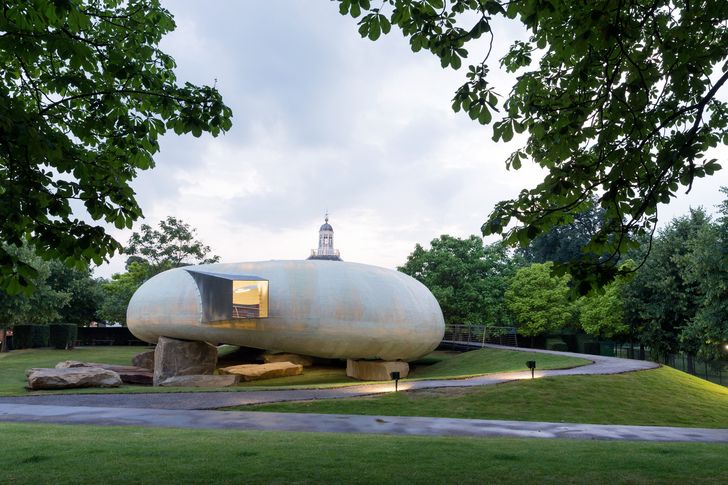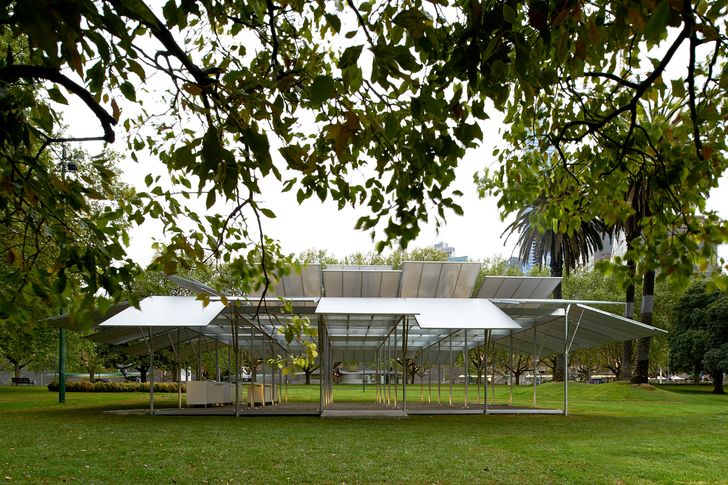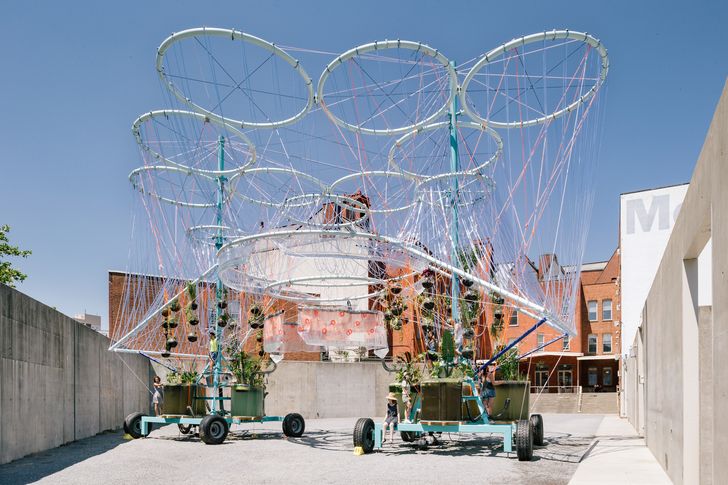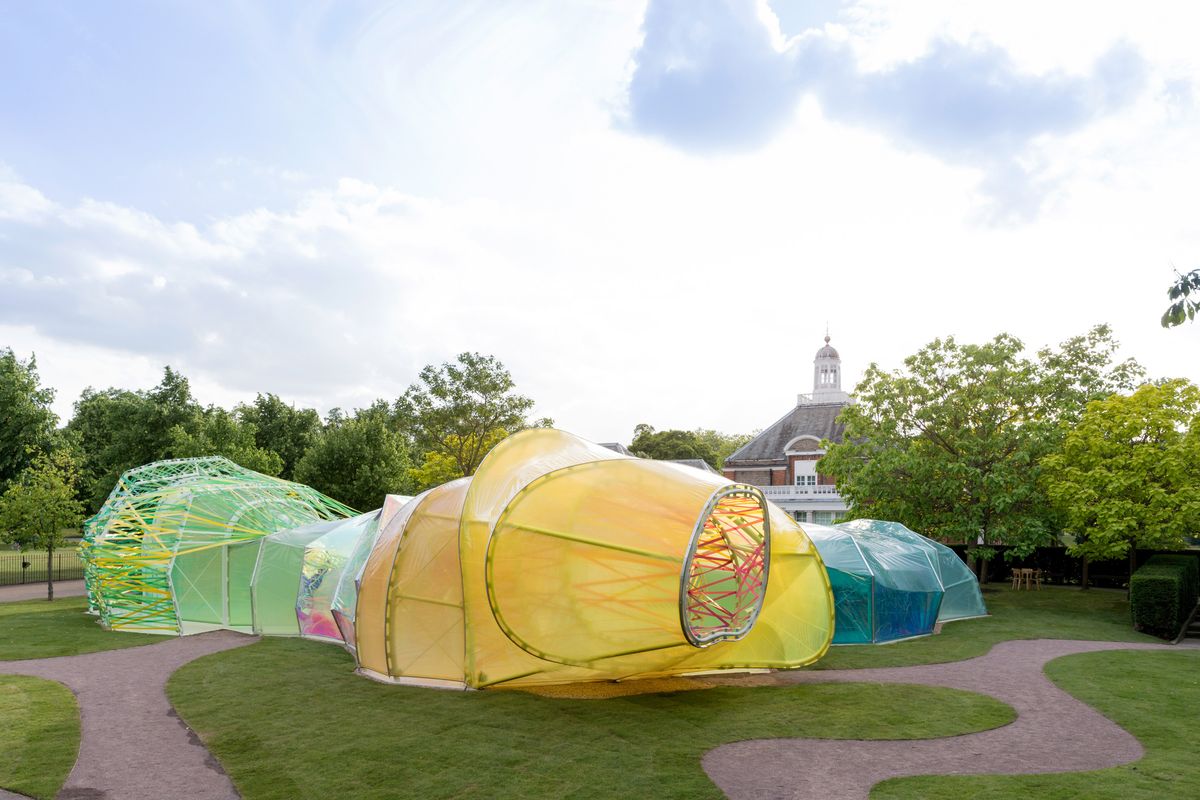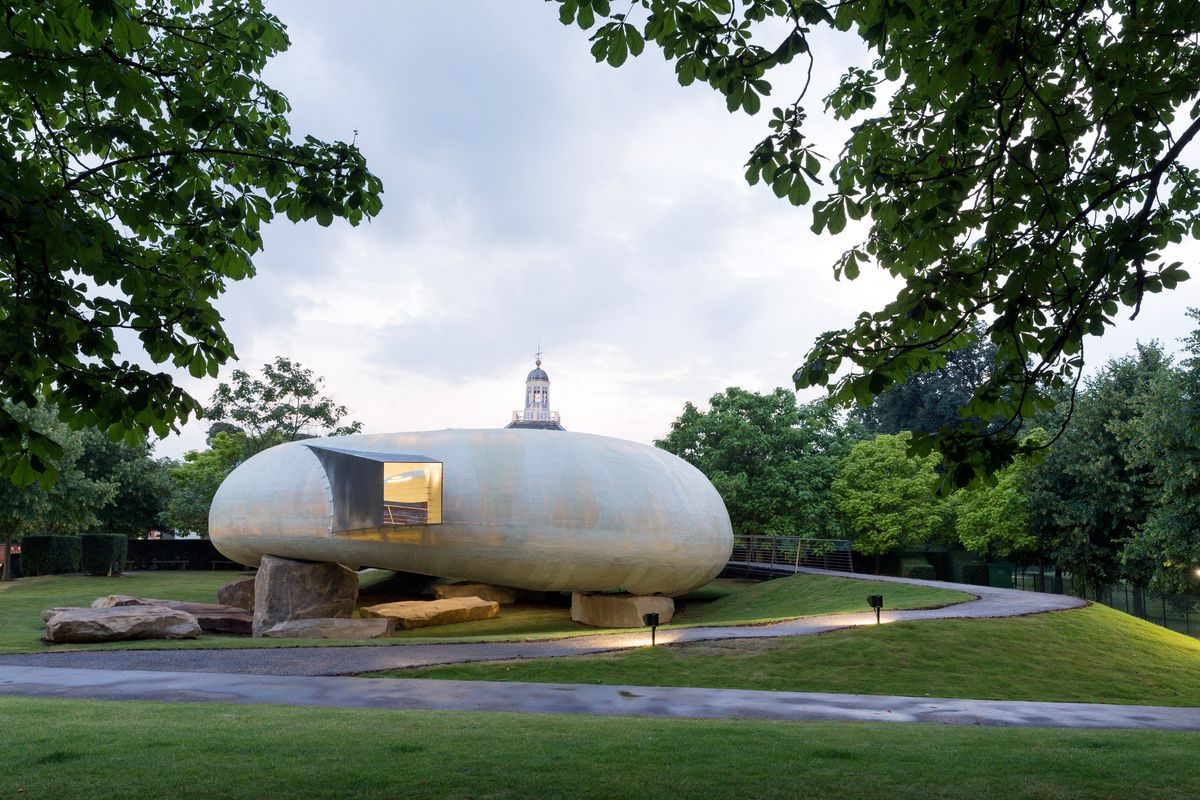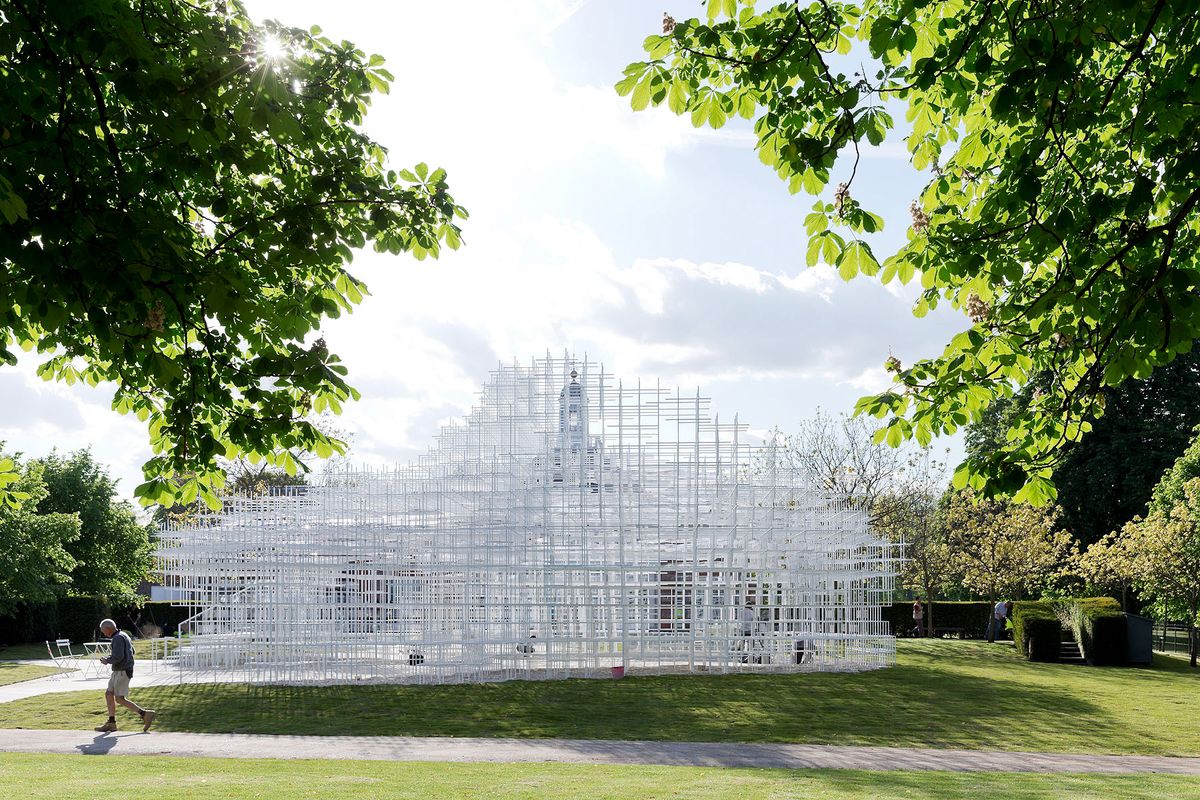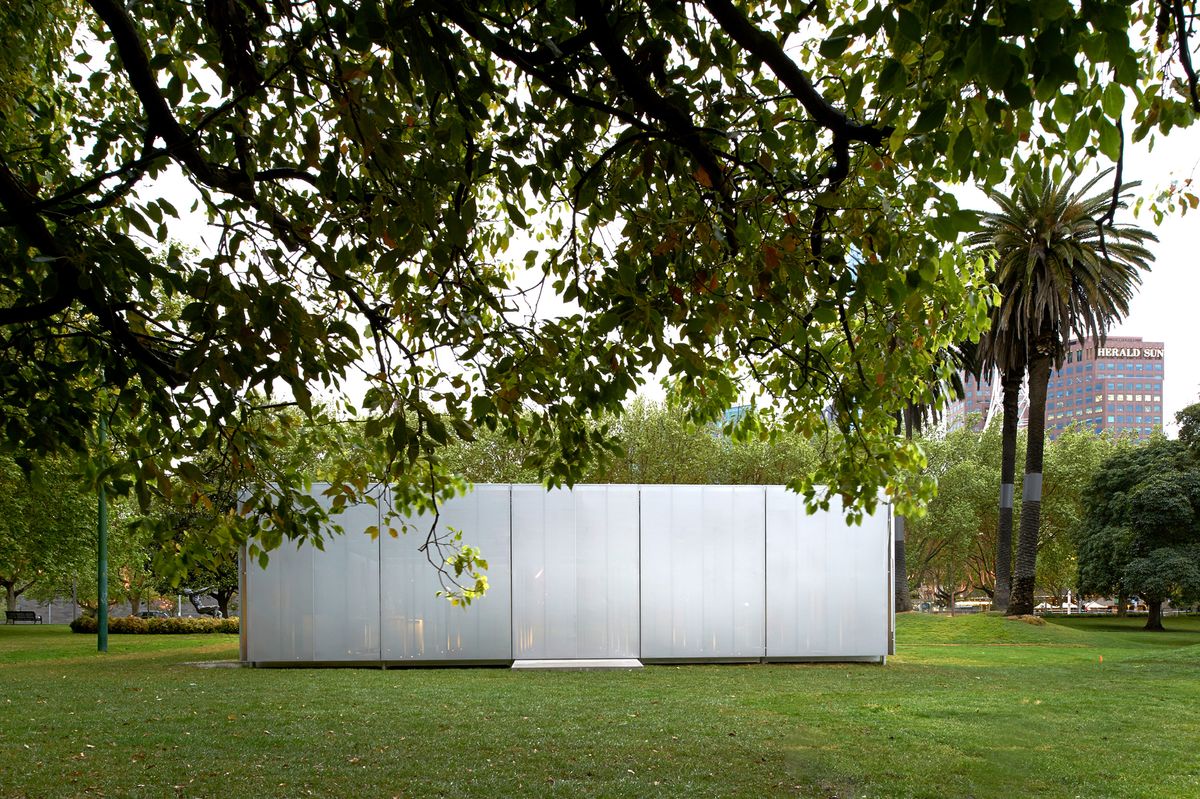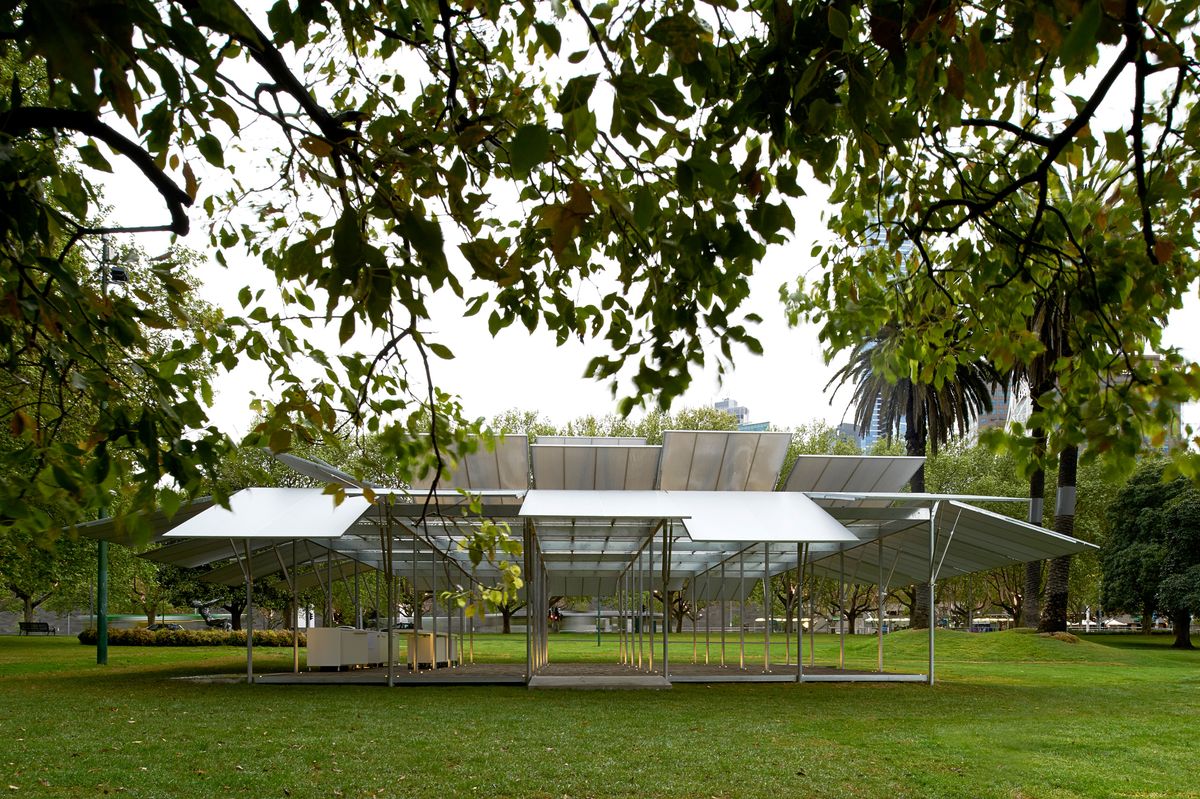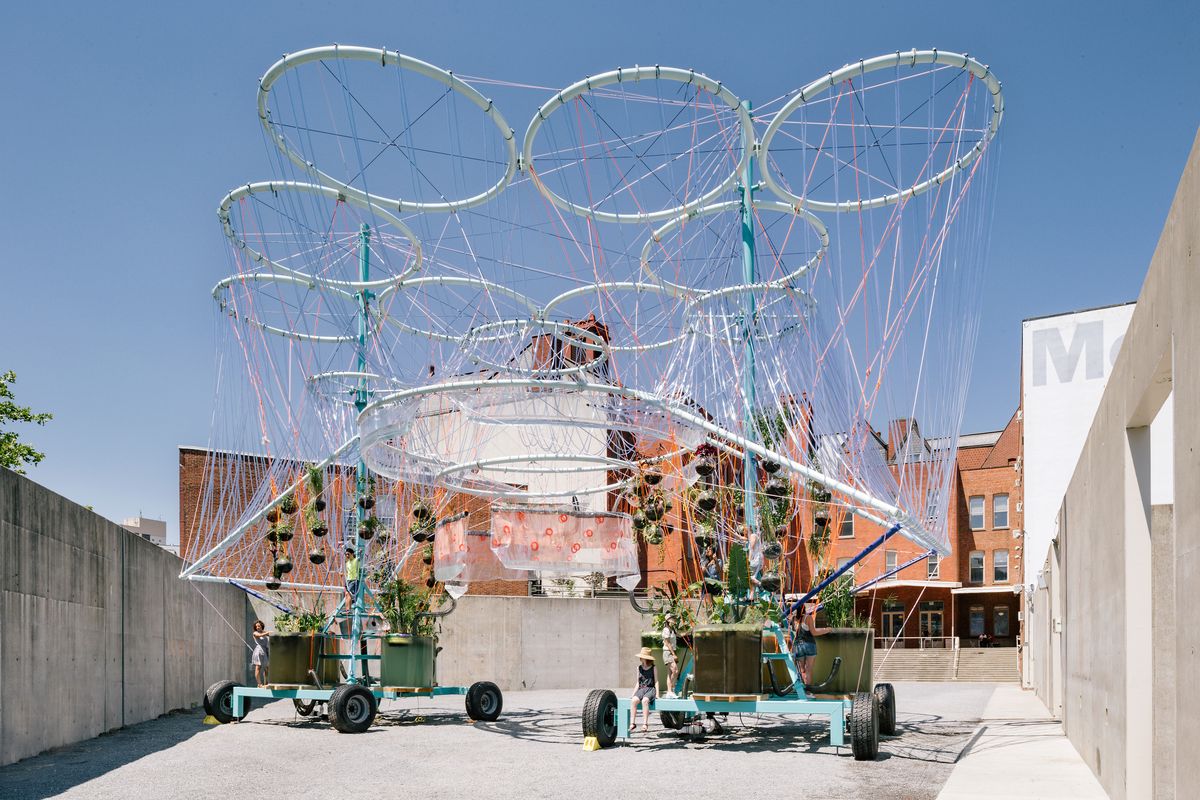One of the most successful recent strategies of visual arts institutions has been to include architecture. In particular, the Serpentine Pavilion program developed by Julia Peyton-Jones from 2000 until she stepped down as director in 2015 has inspired a global phenomenon in the commissioning of temporary, largely functionless pavilions or installations by art galleries, notably the annual Young Architects Program initiated by Museum of Modern Art and MoMA PS1 in New York in 2000, with an Italian edition at MAXXI in Rome (since 2011), and countless one-off examples including the BMW Guggenheim Lab (2011). Australia is no exception to this trend, with the Fugitive Structures series first commissioned by the Sherman Contemporary Art Foundation (SCAF) in 2013, the Naomi Milgrom Foundation’s MPavilion in 2014, and most recently the National Gallery of Victoria’s (NGV) Summer Architecture Commission in 2015. (Follow the links for further reading on the 2016 SCAF pavilion, and the 2015 Mpavilion and NGV Summer Architecture Commission.)
The rapidly accelerating pavilion phenomenon epitomizes a larger trend of interdisciplinary crossover between architecture and the visual arts, in which the exhibition of architecture as art in visual arts venues is mirrored by the popularity of visual artists using architectural means, from actual buildings to physical and digital modelling and including explicit reference to architecture as a subject or topos. The large-scale cardboard constructions of French artist Olivier Grossetête, including The Ephemeral City in the Cutaway installation space at Barangaroo Reserve, which was part of the 2016 Sydney Festival, are an example.
Serpentine Gallery Pavilion 2014 in London, designed by Smiljan Radić.
Image: Iwan Baan
Arguing as to whether architecture is, or is not, art is an old debate that can’t be resolved, but a new academic project aims to research the positions and interests at stake in the question as they realign around developments in the visual arts such as the pavilion phenomenon. The Australian Research Council-funded research project, titled “Is Architecture Art? An intellectual history of categories, concepts and recent practices,” is led by Professor John Macarthur with Dr Susan Holden (the authors of this article) and Professor Wouter Davidts (Ghent University) within the Centre for Architecture Theory Criticism History (ATCH) in the School of Architecture at the University of Queensland. It aims to examine how such momentum in the art world is changing the concept of architecture.
While architecture has been exhibited in museums and galleries for as long as they have existed in their modern form, the current situation is relatively recent and is marked by the convergence of installation art and architecture. On the architecture side, collaborations with artists and the creation of exhibition-specific works have characterized leading practices such as Herzog & de Meuron (Archaeology of the Mind at the Canadian Centre for Architecture in 2002) and Rem Koolhaas/OMA/AMO (Content at the Neue Nationalgalerie in Berlin in 2003), but also Zaha Hadid, Frank Gehry, Jean Nouvel, David Adjaye and younger, more experimental practices such as Atelier Bow-Wow, Office, Dogma and 51n4e. The phenomenon of pavilions has rapidly spread into the practice of commissioning architectural works for gallery-based shows, such as the Royal Academy of Arts’s (UK) Sensing Spaces (2014), and architects being commissioned for works in surveys such as the NGV’s Melbourne Now (2013). The scale and frequency of the crossover are rapidly increasing.
On the visual arts side, a number of prominent visual artists including Olivier Grossetête, Jorge Pardo, Andrea Zittel, Do-ho Suh, Atelier Van Lieshout, Callum Morton and Peter Hennessey make works that directly refer to the built environment and architecture as a discipline, while artists interested in the problematic participatory works, such as Rirkrit Tiravanija, Thomas Hirschhorn and Jeanne van Heeswijk, have taken up architectural commissions. These two trends are closely linked conceptually and the traditions behind them have been explored in exhibitions such as Architecture & arts, 1900/2000 (2004) held at Palazzo Ducale in Italy, ArchiSculpture (2004) in Basel, and Psycho Buildings (2008) at The Hayward Gallery in London. The two trends also have a common audience, yet they continue to maintain the distinct disciplinary categories that arise in the differing education, career profile, funding and critical reception of architects and visual artists.
MPavilion 2014 in Melbourne, designed by Sean Godsell Architects.
Image: Earl Carter
The awarding of the Turner Prize in October 2015 to architecture collective Assemble – the first time the award has been given to architects – represents a disruption to the disciplinary distinctions that have persisted in the trend for interdisciplinary work, one which more explicitly points to new ways that architecture is being valued in the cultural economy. The work for which Assemble was awarded the Turner Prize involved its collaboration with local residents to renew a rundown suburban area of Liverpool in the UK. Discussion of Assemble’s win in architecture media has focused on the social engagement aspect of their work and its potential to revitalize the role of community consultation practices developed in the architecture profession in the 1970s. But Assemble’s recognition in the art world is also connected with the rise in the visual arts of “relational aesthetics,” where the experience of art is not contemplative but structured by installations and procedures, often around the simulation of everyday activities. While the award recognizes the value of such design practices it also stakes a claim over them that is as much about the art world economy and the value of architecture to the Turner Prize brand as it is about institutional recognition for a new direction in art.
One of the important innovations of the “Is Architecture Art?” project is to consider the popularity of exhibiting architecture as art, and the rapid increase in interdisciplinary practice between architecture and the visual arts, as part of a larger cultural development in which architecture has also become an exemplar of a “creative industry,” a form of cultural production that is at home in the commercial economy and thus a rebuke to the old elitist high arts that rely on public subsidy. Put this way, in terms of concepts of art or industry that encompass architecture, the two directions seem in stark contrast. Yet in the realpolitik of culture both categorizations are being put to work to expand the remit for architectural practice.
The project aims to show how these two apparently different roles for architecture in contemporary culture are interconnected, and the effect of recent developments in contemporary visual art and cultural policy on the concept of architecture, as it is understood in the profession, government and the wider community of cultural workers and audiences. While the project will research the practices of artists, architects, curators, institutions and policymakers since 1980, it will do so against a longer background of cultural history going back to eighteenth- century divisions of the arts and the nineteenth-century debates around professionalization. In this longer timeframe we see that architecture is a “sometimes” art that has been included, excluded and differently ranked in systems of the arts since the eighteenth century and it is this ambiguity that is being exploited in different ways in the dance of architecture and the visual arts in the present.
Installation view of Andrés Jaque/Office for Political Innovation’s COSMO, winning design of the 2015 Young Architects Program, at MoMA PS1 in New York.
Image: Miguel de Guzman
Cultural policy is generally considered to be in a different sphere of practice, and of academic study, from the history and theory of art and architecture. It is, however, fundamentally at stake in the interests that institutions have in commissioning and funding works and exhibitions that span art and architecture. While the project focuses on the works and workers, it is also concerned with researching this at the level of policy and government: how the agendas of architects, artists and curators map against the terms of the mission statements and administrative structures of art galleries and funding bodies. Here the logic of “governmentality” has seen increasingly detailed management of culture as something that can produce “joined-up” government, finding synergies between the enjoyment of art and training in civics, and between funding for culture and the growth of a creative economy. In this sphere, the categories of art and architecture have a straightforward instrumental use in the rapidly increasing collection of data on cultural engagement, employment and their economic impacts. But the fit of these categories with the concepts held by architects, artists and the public is at times loose and even problematic.
The “Is Architecture Art?” project won’t come up with an answer, but it does promise to give some perspective, historical and conceptual, on the terrain which architects, visual artists, curators and policymakers increasingly contest. There are new forms of cultural practice emerging, which may be advantageous for architects, but more than this, the appearance of architecture in the art gallery returns us in a new way to fundamental questions. It is traditional to think that the apparent uselessness of art has a greater purpose in giving us a model of the freedom of the imagination. Such a claim is today greatly contested in the notion of creativity as an industry with products and markets, as it is within the visual arts by practices that require participation around social functions and activities. Whether or not the fad of commissioning functionless pavilions as artworks tells us of that freedom or its critique, it certainly indicates a shift in the kind of cultural goods that architects provide.
Source
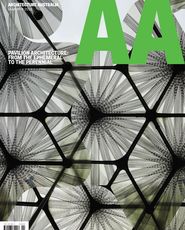
Discussion
Published online: 25 Jul 2016
Words:
John Macarthur,
Susan Holden
Images:
Earl Carter,
Iwan Baan,
Miguel de Guzman
Issue
Architecture Australia, March 2016


